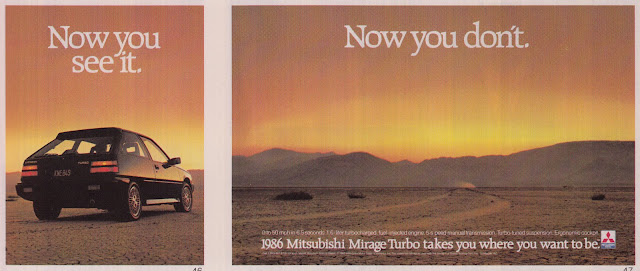HW6

Print July/August 1986. Page 77 In today's blog, I will be discussing the depth that is found in this 1986 ad of a Mitsubishi Mirage Turbo. Considering that it is a photograph, you will probably notice that the depth is presented in a one point perspective where nature (at least it appears to be) adds value to the composition. As mentioned in the book, value is used to describe relative lightness and relative darkness. The time this photograph was taken appeared to be around dusk which gives a fair amount of light for the viewer to determine depth. The setting sun in this case gives the photographer the relative light he or she needs to take the photograph. It's enough to where you can still see the cracking texture of the dry desert dirt as well as the dark outline of the mountains in the distance. I chose this photo because advertisements can be overlooked by viewers unless, for example, it was an ad for an event at a art gallery (those type of ads will


